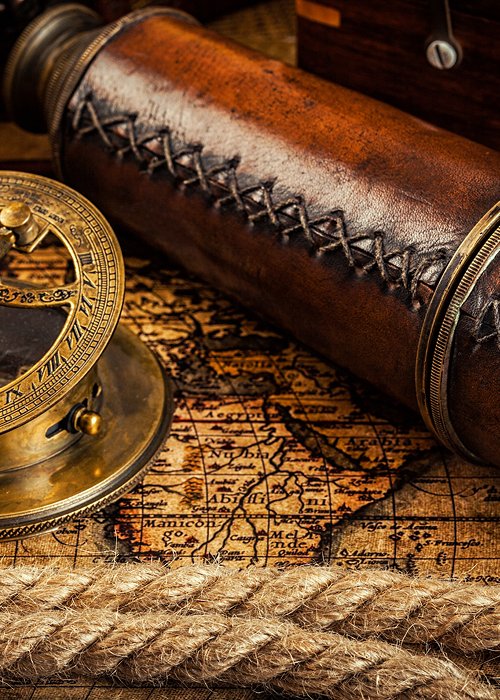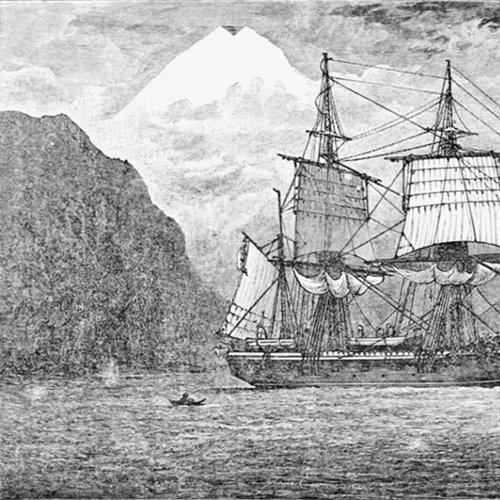12 February is Darwin Day, the annual event that falls on the birthday of Charles Darwin (born 12 February 1809), the British naturalist who, with his theory of evolution, changed the understanding of events in the natural world. This tradition originated in England and the United States where, in the years immediately following Darwin’s death on 18 April 1882, people began to celebrate a day dedicated to him. More than 200 years have passed since the scientist’s birth, but his enormous contribution to scientific research still earns him the enormous recognition throughout the world. The anniversary is an opportunity to defend scientific enterprise using the values of rationalism and secularism.
Voice search

A naturalist’s voyage around the world
A naturalist’s voyage around the world
Charles Darwin was just 22 years old when he set sail on board HMS Beagle on 27 December 1831. Perhaps he had sensed that that voyage was an opportunity not to be missed, an opportunity that would have changed his life. Since a boy, Charles Darwin had shown a particular interest in the natural sciences; in his free time, in fact, he collected bird’s eggs, insects, rocks and minerals and, together with his brother Erasmus, performed chemical experiments in the tool shed in the garden of their home. Although his father had initially pushed him to study medicine – which Darwin abandoned after two years without graduating – and subsequently to an ecclesiastical career, his true and original passions only served to attract the young Charles to history and the natural sciences. While studying theology to please his father, he devoted himself to the study of botany at the same time.
So, when he had the opportunity to leave on the Beagle as a naturalist, he didn’t need to be asked twice: with that voyage on the Beagle he would have been able to demonstrate not only to his father but also to himself that his passion could become a profession.
The voyage around the world aboard the Beagle lasted nearly five years, instead of the planned two: the ship docked again on the English coast on 2 October 1836. Of these five years, Darwin spent 39 months on land and 18 months at sea, collecting a huge amount of material, data and notes on animal and plant species never seen before, but also on geological formations and so on. During the voyage on the Beagle he wrote 770 pages in a diary, 1383 notes on geology and 368 on zoology, and gathered 1529 species specimens preserved in alcohol,in addition to 3907 skins, bones and dry-preserved specimens. These notes, together with the adventures experienced on board the ship, turned in the book that made the name of the young naturalist known to the scientific community: The Voyage of the Beagle (A naturalist’s voyage around the world), published in 1839.
The stops of the voyage
In a letter to his father, Darwin wrote: “Only a person who loves Natural History can imagine the pleasure of strolling under the coconut palms, in a grove of banana trees and coffee plants, among countless wild flowers. […] Explaining their colours to a blind man would be as beneficial as trying to make a person who has never left Europe understand the total dissimilarity of a tropical landscape”.
Let’s retrace all the stops of the Beagle around the world.
6 January 1832 – Tenerife, Canary Islands
The Canaries were the first stop of the Beagle. The ship moored in Tenerife, but no one was able to set foot on land, because the local authorities feared that the crew was infected with cholera. The expedition therefore set sail again towards the Cape Verde islands.
16 January 1832 – Cape Verde Islands
Darwin’s observations began here. In addition to collecting data on plants and animals, he focussed on the morphology of the territory and the geological structure of the islands. He noticed the presence of shell sediment and volcanic layers.
29 February 1832 – Bahia San Salvador, Brazil
The stop in Bahia was for exciting the young Darwin. The Brazilian forest struck him deeply both for its beauty as well as the opportunities it offered a naturalist: the widest variety of plants, flowers, animals and insects.
February 1832 – July 1835 – South America
The Beagle reached South America on 29 February 1832. Darwin remained there until the summer of 1835, when the ship set sail for the Galapagos Islands. The itinerary of the voyage included many coastal (Western and Eastern) areas, islands (Falklands, Chonos, Chiloe) and most of the inland areas (Patagonia, Andes).
A curiosity: In the Tierra del Fuego is Mount Darwin, named so by the captain of the Beagle, Robert FitzRoy, to celebrate Darwin’s 25th birthday (12 February 1834). Mount Darwin was the highest peak visible from the Beagle during navigation off the coast of the Tierra del Fuego.

Representation of the brig Beagle sailing through the Strait of Magellan.
15 September 1835 – Galapagos Islands
Darwin found the Galapagos islands to be very hospitable, especially for the climate. As a good naturalist, Darwin observed that there was something special in the native species of these islands. From his observations we obtain a very accurate description of the environmental and geographical conditions that characterised the archipelago 200 years ago and the living species found there. He observed with curiosity the extremely high diversity of fauna and flora species. He had the brilliant idea of comparing the morphological characteristics of the different species and the environmental characteristics of the ecological niche of each of them, thus conceiving his famous evolutionary theory, observing the strategies of adaptation to the environment that these species had developed and that had initiated a true speciation, as a result of natural selection based on such environmental adaptation.
21 December 1835 – New Zealand
Darwin noticed New Zealand’s gentle landscape: hilly, full of valleys and deep green in colour. He also underlined the contrast with the welcome received in Tahiti, where the inhabitants had shown greater friendliness, kindness and helpfulness. Finally, Darwin described the difficulties in moving around the country due to its difficult roads.
12 January 1836 – Australia
In Australia, Darwin observed that the degree of civilization was much higher than in South America or New Zealand, but the presence of Europeans was causing the gradual disappearance of the local population. As for his work as a naturalist, he carefully studied certain types of plants and birds, but above all kangaroos, rat-kangaroos and the platypus.
5 February 1836 – Tasmania
In Tasmania, Darwin made several expeditions in the hinterland of the island, dedicated to the study of the geology of the place.
1 April 1836 – Keeling Islands
The Keeling Islands were a real mine of information for Darwin. Many were the aspects that seemed worthy of being studied: the almost total lack of flora and reptiles, certain insect (13 species) and bird (waders: snipes and corals) varieties, giant clams (tridacana clams), the prawn (Birgus latro) that eats coconuts, fish that eat coral, coral reefs and their formation in reefs or atolls, the geological characteristics of the islands (quartz, porphyry and granite rocks).
29 April 1836 – Mauritius Islands
The islands were at the time a British protectorate. Darwin observed the racial diversity of the inhabitants. The only naturalist aspects that interested him were the geology and morphology of the island, especially in relation to its volcanic origin.
9 May 1836 – Cape of Good Hope
Here Darwin noticed that the antelope was the most common animal and studied its behaviour. He was surprised by the high density of elephants in a land so poor in vegetation: herbivorous animals of that size gave the idea of requiring large amounts of daily food, but the situation proved the opposite. Darwin surmised therefore that the shrubs available were sufficient for the elephants and that, despite the appearances, they did not need to eat that much.
8 July 1836 – Island of St. Helena
As a naturalist, Darwin focussed on the island’s geological history, plant varieties present (some unique in the world), history of the forest areas (forest extinction) and on the animals, especially birds, and insects. Overall, the island turned out to be very interesting.
11 August 1836 – Bahia San Salvador, Brazil
The Beagle also made a stop in Bahia on the way back before heading directly for England, where it arrived on 2 October 1836, ending its voyage in the port of Falmouth.
The elaboration of Darwin’s ideas, lasting 23 years after his return from the voyage around the world, culminated in 1859 with the publication of “The Origin of Species,” his most famous and revolutionary book that made Darwin’s the father of evolution. “The Origin of Species”, while on the one hand causing a scandal and fierce opposition, especially in religious circles, among scientists soon found wide acceptance. It immediately became a best seller, and in less than ten years Charles Darwin published six editions (the last in 1876). This pillar of scientific literature gave rise to another volume in 1871, destined for success and to provoke discussion, since the two parts into which it was divided discussed The Descent of Man and Selection in Relation to Sex. In the latter, Darwin highlighted another selective mechanism in addition to that of the environment: selection based on the mating choice. Darwin continued his naturalistic e studies until almost 1882, the year of his death.
by Benedetta Palazzo
Read also...

A turtle’s life


